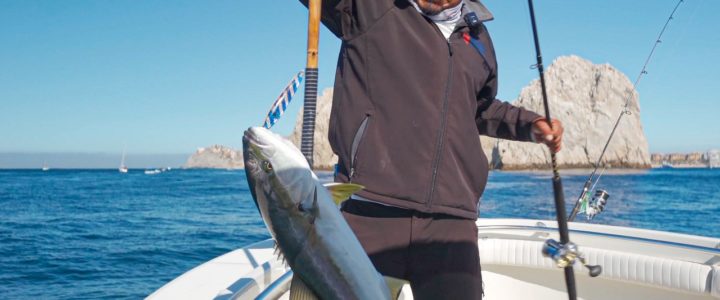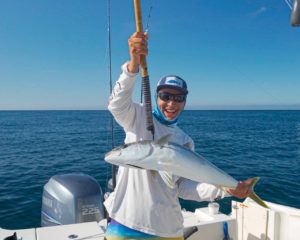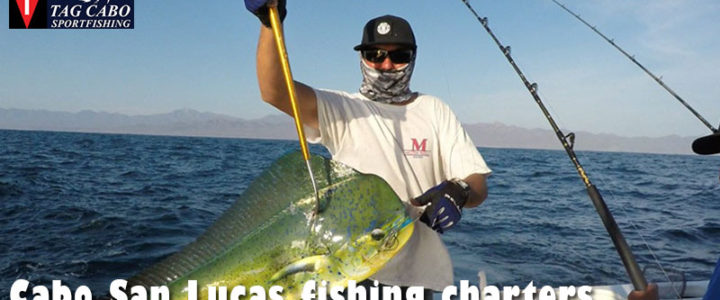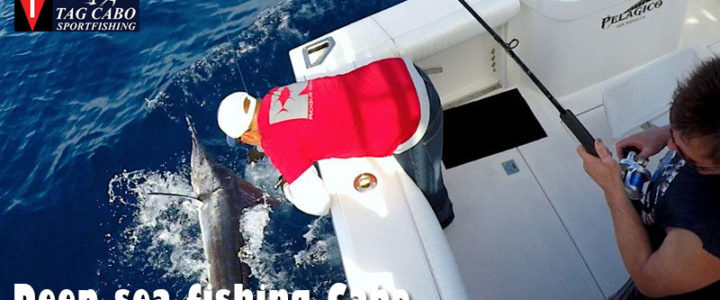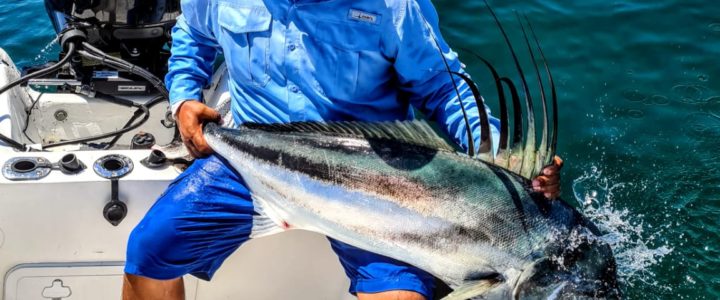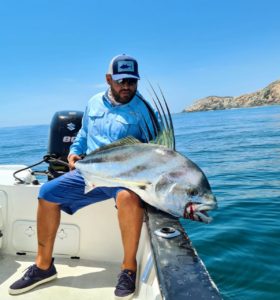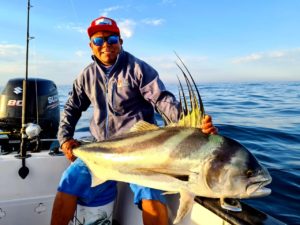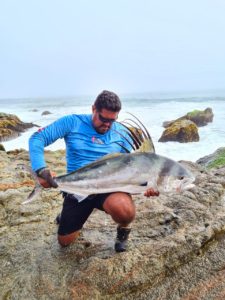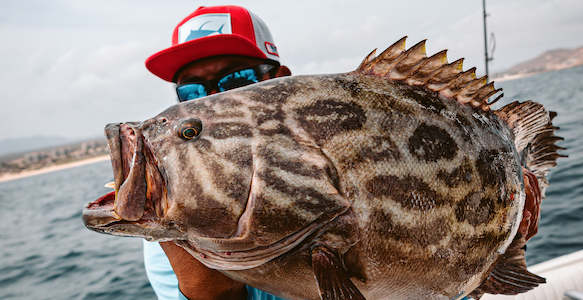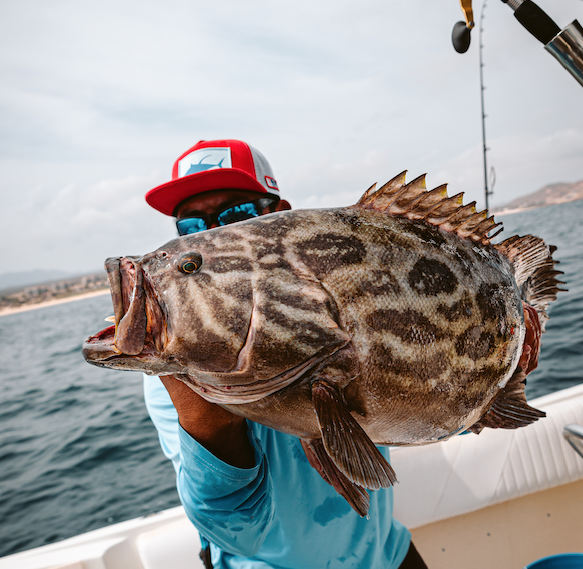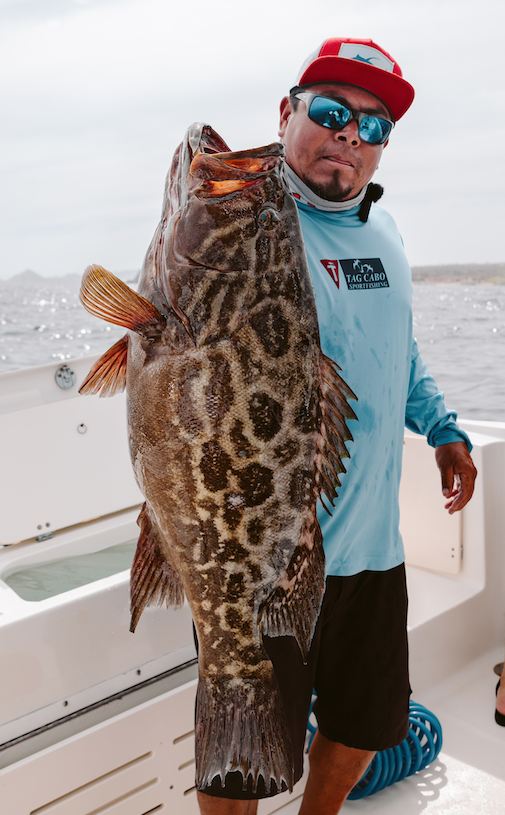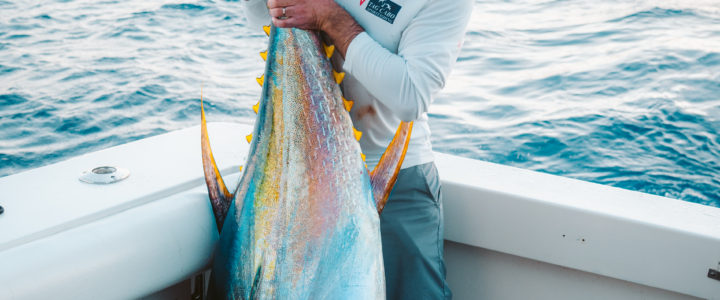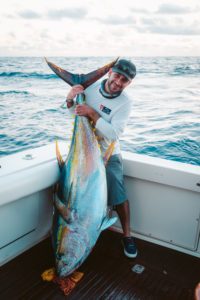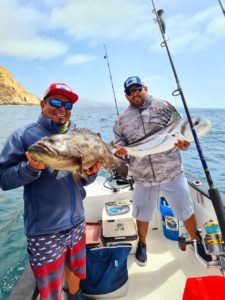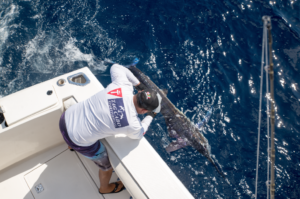How to catch yellowtail amberjacks in Cabo San Lucas
The first step in any successful fishing trip is coming up with a game plan for the day. Since our goal on this trip was to cover as many yellowtail-fishing scenarios as possible, Arturo Chacon and Felipe Mayo strategized on how best to break up the day. “It’s important to consider all of the information you have available when deciding where and when to fish,” explained Arturo.
Cabo San Lucas yellowtail often prefer metal jigs to live bait, but choosing the right jig for the situation is key. When fishing schools in deep water, drop a heavy jig such as a Tady 4/0 or Salas 6X Jr all the way to the bottom, and wind it as fast as you can, while occasionally pausing the retrieve. This is called yo-yo fishing. To properly fish the jig, you’ll need a 7-foot heavy-action rod matched with a high-speed reel filled with at least 40-pound-test. A Calstar Graphiter 700H or similar rod matched with a reel such as a Penn Torque 30 full of 80-pound Spectra with a 3- or 4-foot leader of 60-pound fluorocarbon will give you plenty of pulling power to get a big yellowtail coming up and away from the rocky bottom.
When the fish are high in the water column, try a lighter metal jig such as a Tady 45 or Salas 7X. These swimming lures, known as surface iron, can be deadly. Keep an eye out for any birds that are looking hard at the water or yellows that are boiling on forage fish, then let your surface iron fly. Once you’ve made an accurate cast to the area where you saw the fish, retrieve the jig with a medium to fast wind and hang on. Long rods rule for fishing surface iron, and most anglers use 9- or 10-foot rods to give them casting distance. The drawback to these longer rods is that they sacrifice leverage. I prefer an 8-foot rod for that very reason, and have had great success fishing a model such as a Cousins CJB 80M-CT matched with a Penn Fathom 25N loaded with 65-pound Spectra and a short 60-pound fluorocarbon leader. Whether yo-yoing heavy iron or swimming a surface iron, once a fish strikes, just keep reeling until the fish is pulling line. Trying to set the hook will usually just pull the lure out of the fish’s mouth.
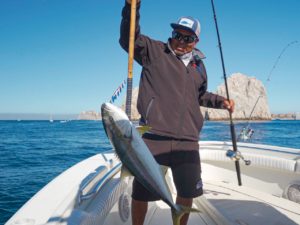
Trying to figure out what a school of yellowtail is doing 60 feet under your boat might seem like an impossible task, but if you pay attention to what your fish finder is telling you, it’s actually simple. Yellowtail are schooling fish, and the school tends to mark differently depending on what they are doing. If you run over a school of yellows that’s on the move, you might mark only a small chunk of the school in the moment that the school intersects with the beam of your sonar. On the flip side, inactive fish will often mark as long worms as they cruise slowly under the boat, allowing time for your fish finder to ping off the same fish multiple times. Biting schools, however, will show up as scattered marks that are moving diagonally up or down on the finder as they fan out to chase down baitfish.
About tag Cabo Sportfishing.
We have been guiding sportfishing charters in Cabo San Lucas since 2018 with nothing but the best equipment and super clean boats with english speaking Captains.
Contact us at tagsportfishing@gmail.com or click on the link. Guided fishing trips in cabo San Lucas.

